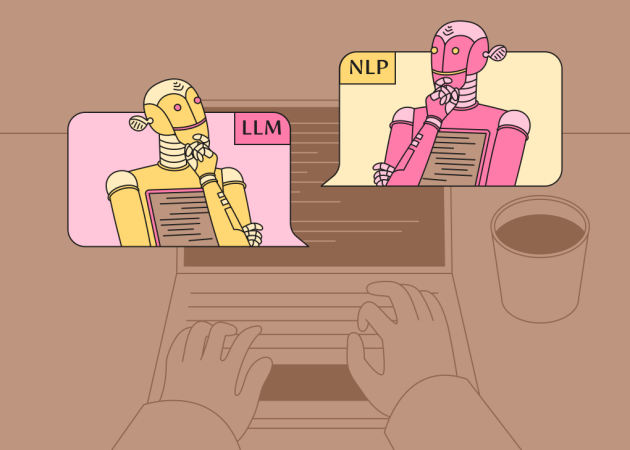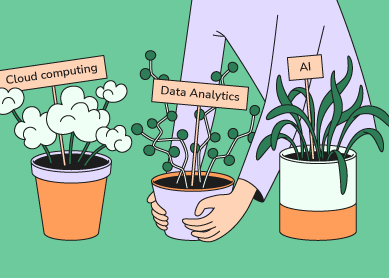
2023 Software Tech Stacks & Developer Salaries for GreenTech Projects
Contents
Contents
In the fast-paced and rapidly changing world of technology, 2023 promises to bring exciting new advancements in the GreenTech space. As the industry expands, the demand for skilled professionals to support this growth also increases. The intersection of software and sustainability creates a need for developers who can work with cutting-edge technologies such as Artificial Intelligence, the Internet of Things, Cloud Computing, Data Science, and Application Development.
With the talent shortage posing a major challenge, companies must be strategic about building and sustaining teams. In this article, we explore the top software tech stacks for GreenTech projects in 2023 and global salary highlights in these fields.
Artificial Intelligence Technology Stack & Rates
As AI continues to gain traction, companies are rethinking their environmental impact strategies, leveraging its power to enact meaningful change. Meanwhile, startups are challenging traditional industries by creating innovative products that are both energy-efficient and eco-friendly. The combination of Big Data, hardware, and algorithms allows businesses to automate many complex processes, including data analysis and prediction.
According to a recent survey by the European Commission, the biggest obstacle businesses face in implementing AI at a large scale is finding qualified developers. As the demand for AI professionals increases, it is crucial for both tech experts and businesses who create AI-based products to identify the essential AI skills highly sought after in the market. The programming languages highlighted below form the base of the most popular frameworks and libraries for AI development.
Basic AI Tech Stack for GreenTech Projects
| Python | Python is the primary programming language for AI and machine learning (ML) in complex scenarios. It supports multiple AI libraries, including NumPy, SciPy, Theano, Pandas, TensorFlow, Keras, and PyTorch. Many frameworks and libraries were designed to classify and analyze large datasets, streamline coding, provide supervised and unsupervised machine learning algorithms, and support the construction and training of artificial neural networks. |
| JavaScript | There are several advantages to developing AI in JS, including well-supported large-scale projects, improved user interaction, ease of debugging, and facilitated visualization. JavaScript encompasses ML libraries and modules for AI development; TensorFlow.js is a JS framework for machine learning training and deployment in the browser or Node.js. |
| C++ | The C++ software is suitable for creating high-end native AI applications for various operating systems. Multi-threaded applications can be integrated with the operating system’s camera and other sensors (such as peripherals). C++ provides the speed and reliability that machine learning requires and is a good source of ML-friendly libraries. |
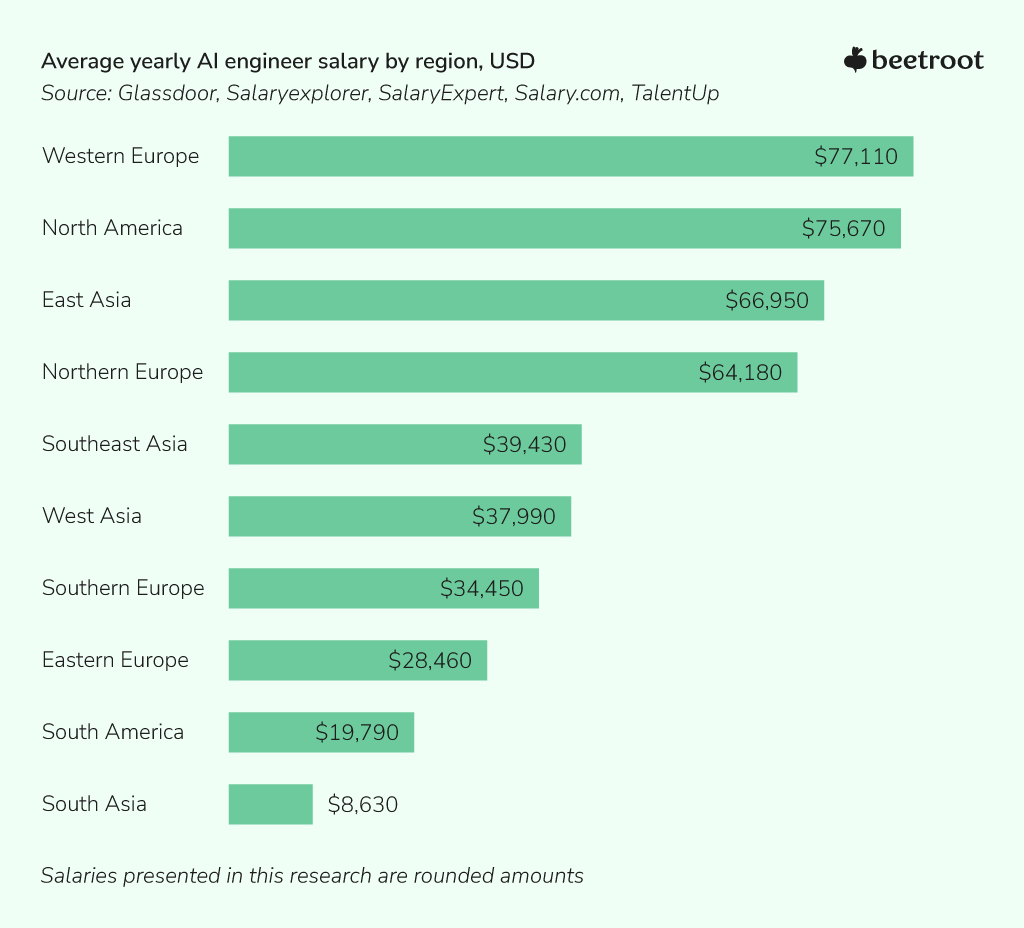
Internet of Things: Technology Stack & Rates
The green and clean technology sectors heavily rely on IoT technology to minimize human interference and generate data-rich environments for service improvement. Moreover, IoT technology can potentially reduce costs and emissions to the advantage of individuals and entrepreneurs seeking higher profits and compliance with lower emissions standards.
Starting an IoT project from scratch can be overwhelming due to the wide range of sensors, networks, and communication protocols involved and numerous use case scenarios. However, just like with AI, the complexity of IoT development boils down to selected programming languages.
Fundamental IoT Tech Stack for GreenTech Developers
| Python | Python is the best option for data-extensive IoT development and the language of choice for the market’s most popular microcontrollers: Raspberry Pi, Intel Edison, and Arduino. Python’s extensive libraries and tools have made it compatible with IoT. These include NumPy, sockets and MySQLdb, Matplotlib, requests, Tkinter GUI, TensorFlow, and IoT sensors simulators, such as MQTT (MQ Telemetry Transport), Azure IoT hub SDK, and Countly IoT Pi SDK. |
| JavaScript | In IoT applications, JavaScript powers device interoperability and works in various environments, including gateways and the cloud. JavaScript’s event-driven features make the IoT architecture environment more functional and efficient; JS can handle multiple requests generated by sensors, beacons, transmitters, and motors. Apart from that, Node.js, memory management, event-driven programming, ease of implementation, and JavaScript libraries and frameworks make JavaScript an excellent choice for IoT. |
| PHP | As a time-tested programming language, PHP is well suited for building dynamic and static web applications and IoT server-side layers. Using PHPoC, an expansion of PHP on a chip (adapted for embedded systems), it is possible to make prototypes and the latest-level IoT devices for various needs, including sensor monitoring, peripheral device management, control of relays, servos, stepper motors, and network interfaces. |


Data Science Technology Stack & Rates
The significance of data science and analytics in the CleanTech sector is snowballing. In the past, it was expensive and time-consuming for energy companies to analyze data and gain valuable insights for decision-making. However, with advancements in technology for energy storage, management, and conversion, data analytics can offer even more advantages.
Identifying the most commonly used tech stack among data scientists is quite challenging, as data science covers many applications. And while Python is regarded as the leading programming language for software-based data science, we’d also include JavaScript and SQL if we were to suggest the top three stacks for data scientists.
Selected Data Science Tech Stack for Green and Clean Technology
| JavaScript | JS is easy to get access models and algorithms and enables users to build interactive data visualizations from datasets on a web-based dashboard. It is also valuable for embedding everything from electronics to desktop and web applications. This data science language can be easily and quickly scaled up for large applications. |
| Python | Python libraries enable data analytics algorithms, predictions, and visualization tools, as well as data processing and machine learning capabilities. Data scientists can utilize Python for practically any work because it is compatible with most data formats, supports imported tables, and allows users to generate data sets in fewer than 1000 iterations. |
| SQL | SQL is essential for Data Science for many practical applications, including handling structured data, creating test environments to experiment with data, carrying out data analytics with the data stored on relational databases like Oracle, Microsoft SQL, MySQL, and data wrangling and preparation. |
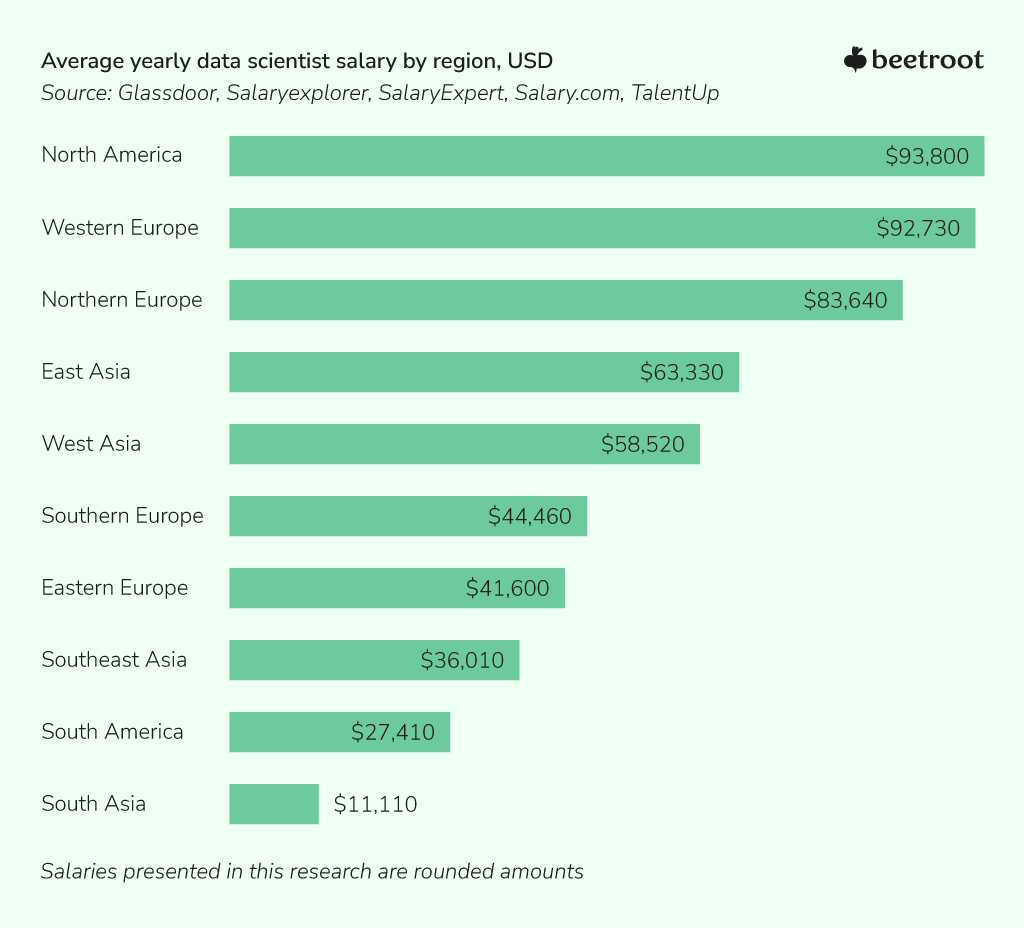
Cloud Computing for Green Technology: Stack & Rates
Cloud computing offers numerous benefits to businesses, including reduced infrastructure investment costs, access to unlimited storage, increased flexibility, and improved security, efficiency, and competitiveness. Cloud technology has already saved over 59 million tons of CO2 and generated over €200 billion ($217.3 billion) in annual savings for companies. Moreover, it enables remote and centralized facility control and access to corporate assets from any device or location through the cloud.
And while there is no such thing as the best development stack for scalable cloud computing, as what works for one product, business, or industry may not work for another, some fundamental technologies can be used in various scenarios.
Popular Development Stacks for Cloud Computing in GreenTech
| PHP | Most developers in the cloud computing field favor PHP because of its versatility with different database management systems and its ability to function seamlessly across various operating systems. As an object-oriented language, it helps develop complex web applications. |
| .NET | .NET has established itself as a fantastic cloud computing framework with connectors for every type of back-end resource. As a result, it’s a proper choice for developing microservices and RESTful APIs that connect various components of an organization’s architecture. |
| Python | Python is especially valuable for handling big data and is widely used in the AWS Cloud. AWS Lambda natively supports it, which makes it an excellent language for creating serverless applications on Amazon Web Services. |
| JavaScript | JS’s power has grown dramatically since the introduction of server-side JavaScript and JS support in major cloud platforms. Node.js is a back-end JS runtime environment that runs on the V8 engine and executes JavaScript code outside a web browser. As a result, JavaScript can be used to build, maintain, optimize, and deploy cloud-native applications. |
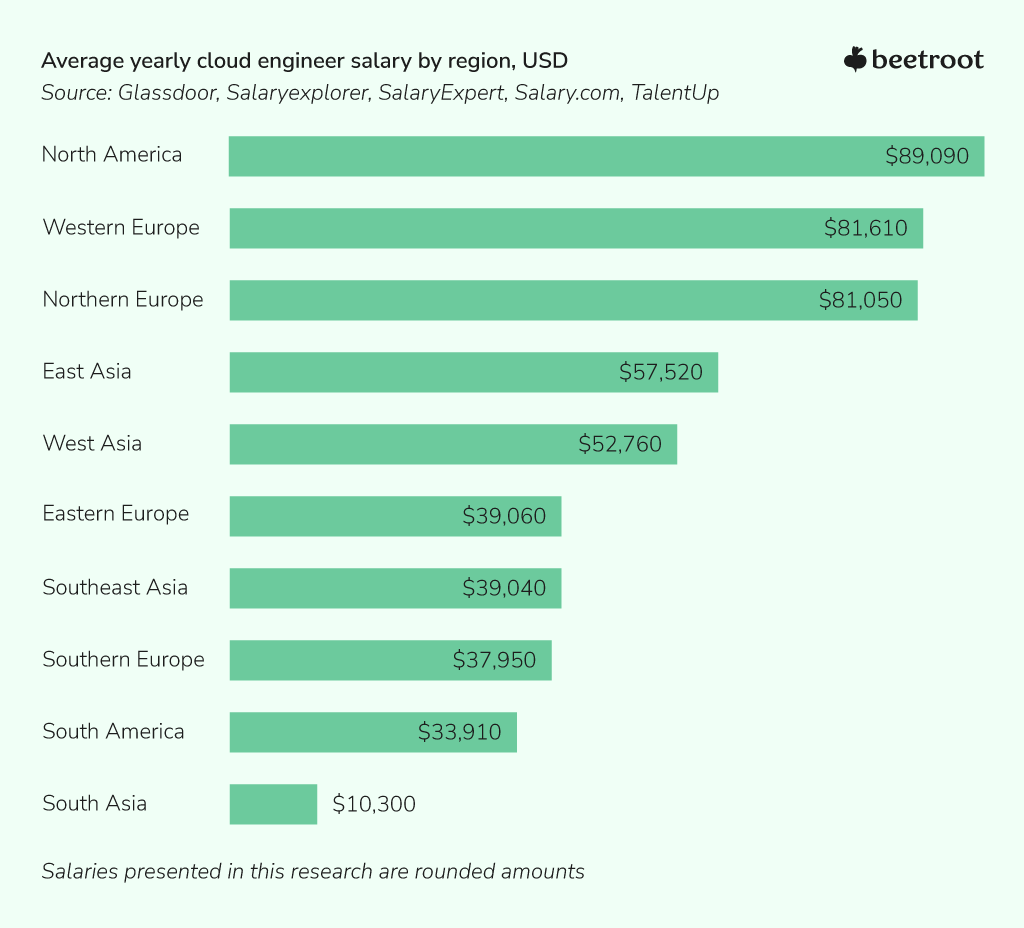
Application Development for Green- and CleanTech
The use of smart devices has boosted the demand for mobile apps in various sectors, including green and clean technology. The surge in GreenTech is driven, to an extent, by the rising environmental consciousness, and mobile apps help spread this awareness to wider audiences. They also facilitate connectivity throughout entire supply chains, from managing field services to monitoring energy consumption in homes and industries.
As a tech partner for GreenTech companies, we at Beetroot stay current with industry developments. One of our in-house R&D projects revolves around a mobile application, Homenergy. Built using React and Node.js, among other technologies, it enables household owners to monitor and manage their electricity consumption. In Stack Overflow’s Developer Survey, React Native and Flutter rank among the top 10 frameworks and are the most popular cross-platform tools.
Best Stack for Mobile App Development in GreenTech
| React Native | It takes less effort to build apps in React Native as opposed to native development without the need to compromise on quality and functionality. React components wrap existing native code and interact with native APIs via React’s declarative UI paradigm and JavaScript. It enables native app development for new teams of developers and lets existing native teams work much faster. |
| Flutter | Flutter apps look and feel similar to native applications. Flutter supports advanced OS features such as GPS coordinates, sensor data collection, permission handling, Bluetooth, and credentials in ready-to-use plugins. Its impressive advantages include faster development, a universal cross-platform UI toolkit, web and desktop support to scale mobile apps to other OSs, and adapting, debugging, and deploying apps for desktop browsers. |
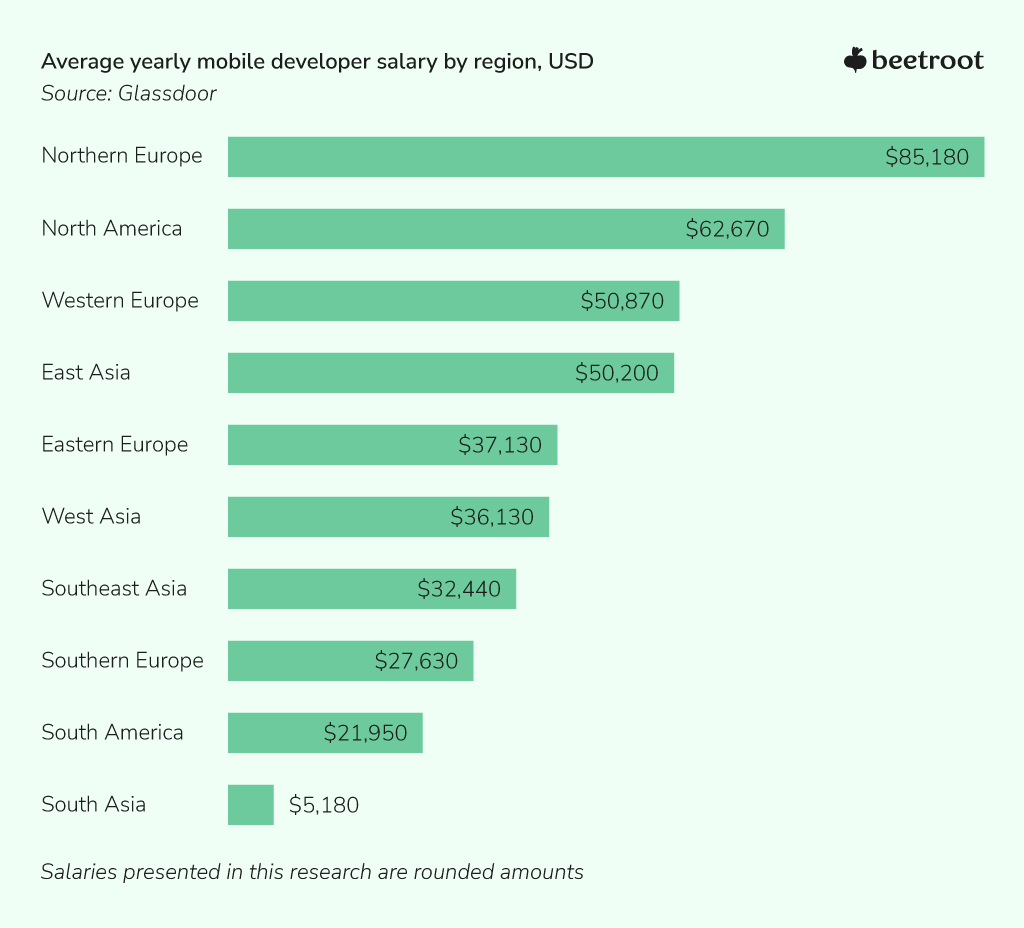
Benefits of Engaging a Dedicated Team With Beetroot
Building a Strategic Tech Partnership
Partnering with like-minded development companies and teams is essential for impactful businesses in the Greentech domain. These partnerships can provide a unique combination of skills and resources, including technical expertise, business acumen, and sustainability knowledge. Beetroot is on a mission to create sustainable social, economic, and environmental impact at scale as a tech ecosystem. We don’t just help you launch your product or scale your engineering capabilities, but we also assist you in expanding your positive influence.
Scaling Your Team for Impact
You will gain access to multiple European R&D locations and a unique Swedish flair through our talent-sourcing services. For building effective teams, we offer two options:
- Flex Team, which utilizes a range of sourcing channels for a quick and flexible ramp-up;
- Dedicated Team, providing tailored recruitment for a long-term team with hand-picked developers. This approach fosters team spirit and a sense of ownership for a strategic, lasting solution.
Ensuring Long-Term Team Success
At Beetroot, we promote a sustainable team approach: taking care of our roles, each other, and the world around us. By prioritizing sustainable teams and healthy workplace culture, we ensure that your business and clients benefit in the long run. To achieve this, we have developed HR processes that keep your GreenTech team connected, integrated, and productive over time.
If you are looking to accelerate your growth and impact, Beetroot can help. So give us a shout today and learn how we can boost your GreenTech project and contribute to a better tomorrow.
Subscribe to blog updates
Get the best new articles in your inbox. Get the lastest content first.
Recent articles from our magazine
Contact Us
Find out how we can help extend your tech team for sustainable growth.






